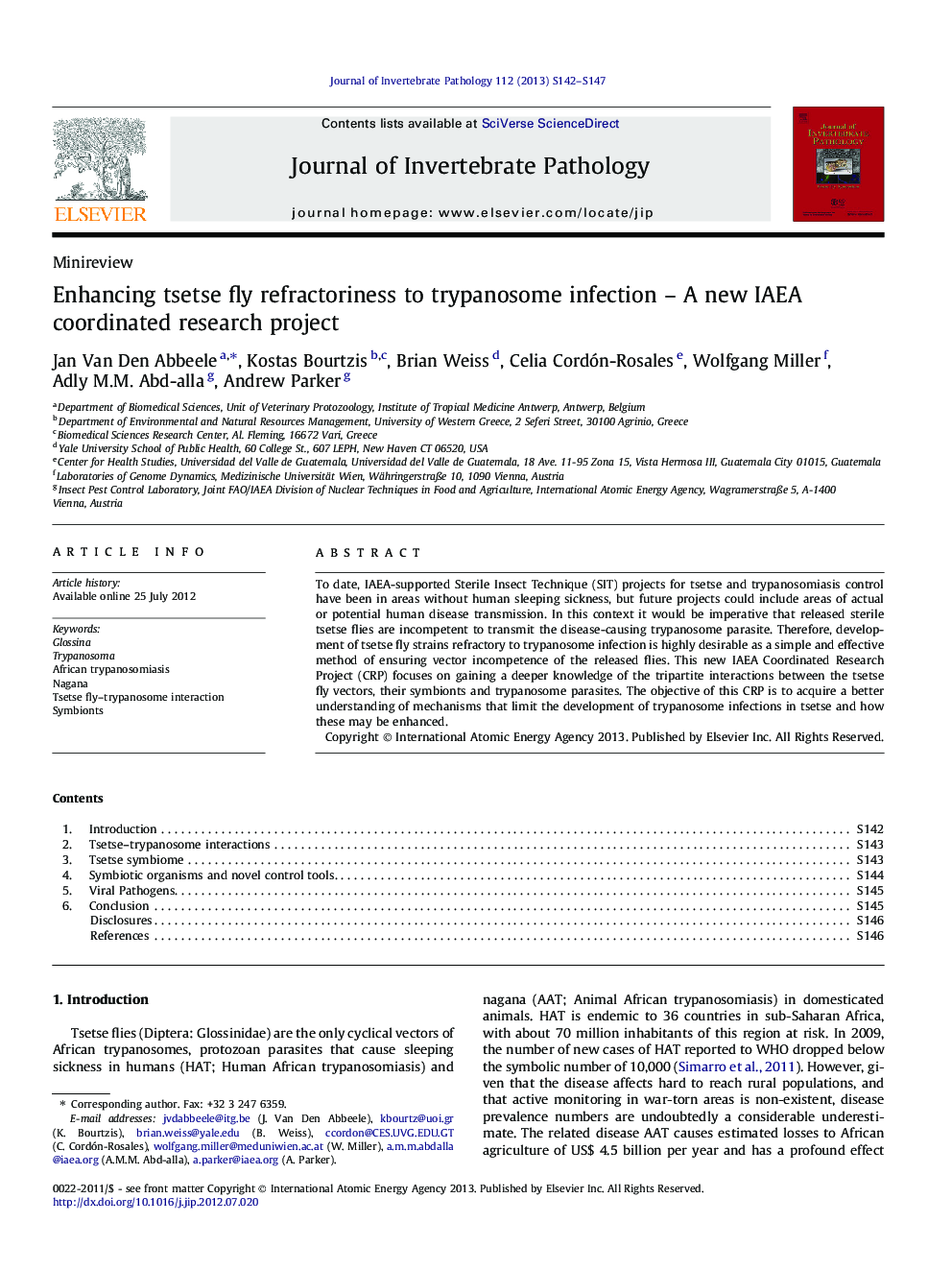| Article ID | Journal | Published Year | Pages | File Type |
|---|---|---|---|---|
| 6389626 | Journal of Invertebrate Pathology | 2013 | 6 Pages |
To date, IAEA-supported Sterile Insect Technique (SIT) projects for tsetse and trypanosomiasis control have been in areas without human sleeping sickness, but future projects could include areas of actual or potential human disease transmission. In this context it would be imperative that released sterile tsetse flies are incompetent to transmit the disease-causing trypanosome parasite. Therefore, development of tsetse fly strains refractory to trypanosome infection is highly desirable as a simple and effective method of ensuring vector incompetence of the released flies. This new IAEA Coordinated Research Project (CRP) focuses on gaining a deeper knowledge of the tripartite interactions between the tsetse fly vectors, their symbionts and trypanosome parasites. The objective of this CRP is to acquire a better understanding of mechanisms that limit the development of trypanosome infections in tsetse and how these may be enhanced.
Graphical abstractDownload full-size imageHighlights⺠Imperative that released sterile tsetse are incompetent to transmit trypanosomes. ⺠Development of tsetse strains refractory to trypanosomes infection is important. ⺠Knowledge of interactions among tsetse, symbionts and trypanosomes is essential.
